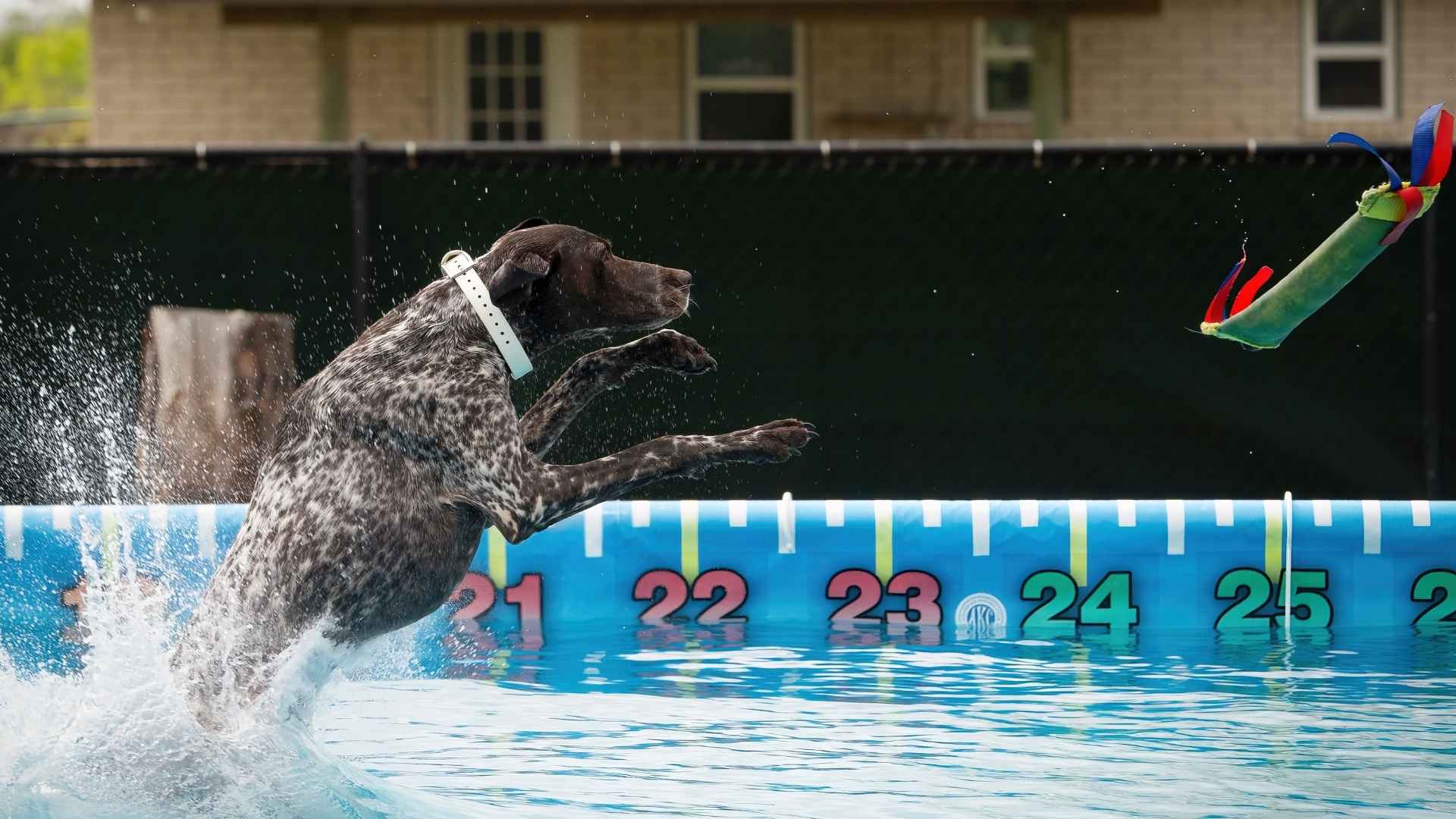For dogs that love to leap, splash, and soar, dock diving is the ultimate thrill. This fast-growing canine sport combines speed, agility, and water-loving enthusiasm into one exhilarating competition. In dock diving, dogs sprint down a dock and launch themselves into a pool, aiming for maximum distance, height, or speed—all while showcasing their boundless energy and natural instincts.
Not every dog takes to the dock with equal enthusiasm, though. While any pup with a strong toy drive and love for water can join the fun, certain breeds are truly built for this challenge. These top-tier dock divers typically share powerful muscles, high energy levels, and an unshakable desire to please. Whether it’s their athletic build, fearless attitude, or sheer joy in making a splash, these dogs stand out in the sport.
In this article, we spotlight the breeds that dominate the dock diving scene. Get ready to meet the canine athletes that combine precision, power, and playfulness in every gravity-defying jump.
Dog Breeds That Excel In Dock Diving Competitions
1. German Shorthaired Pointer
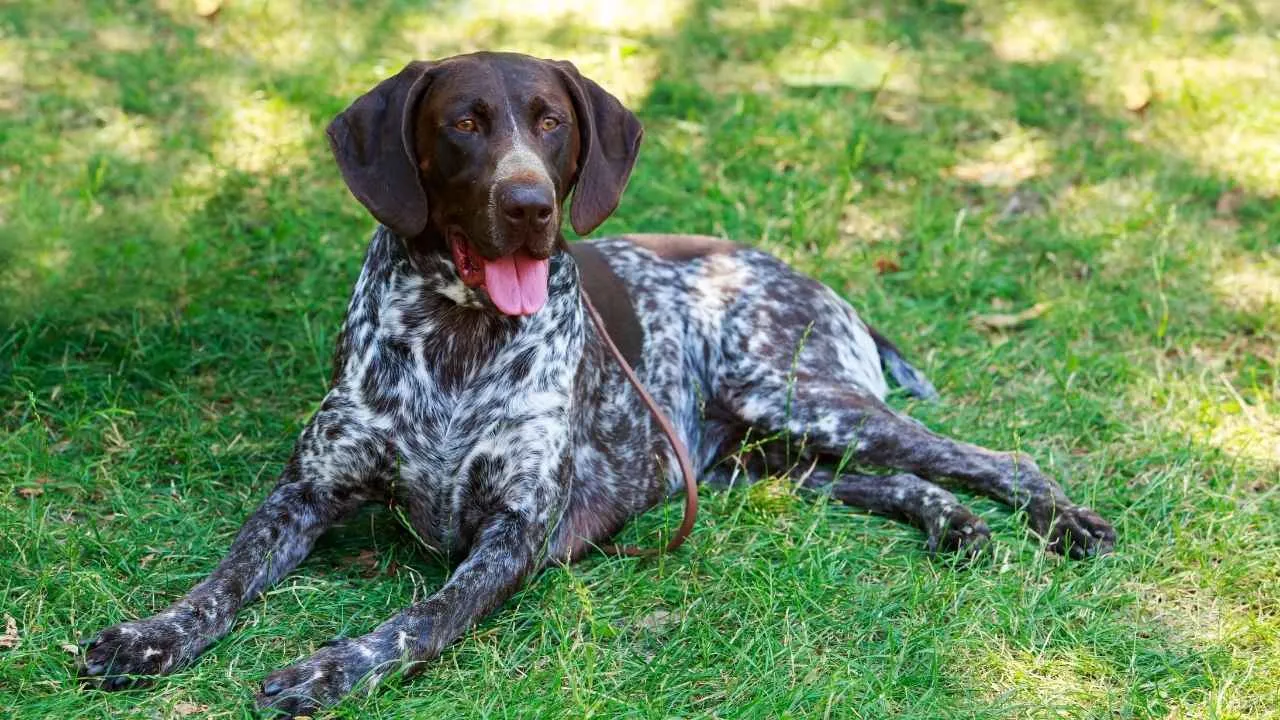
With roots tracing back to 19th-century Germany, the German Shorthaired Pointer (GSP) is a medium-sized sporting dog renowned for its athleticism and eagerness to work. AKC says the German Shorthaired Pointer is a friendly and intelligent dog breed.
Developed for hunting both land and water game, GSPs combine power, grace, and versatility. Males typically stand between 23 to 25 inches tall and weigh 55 to 70 pounds, while females are slightly smaller.
Their sleek coat—either solid liver or liver and white—complements their muscular build and energetic personality. Bred for endurance and agility, their strong hindquarters and love for water make them standout performers in dock diving events.
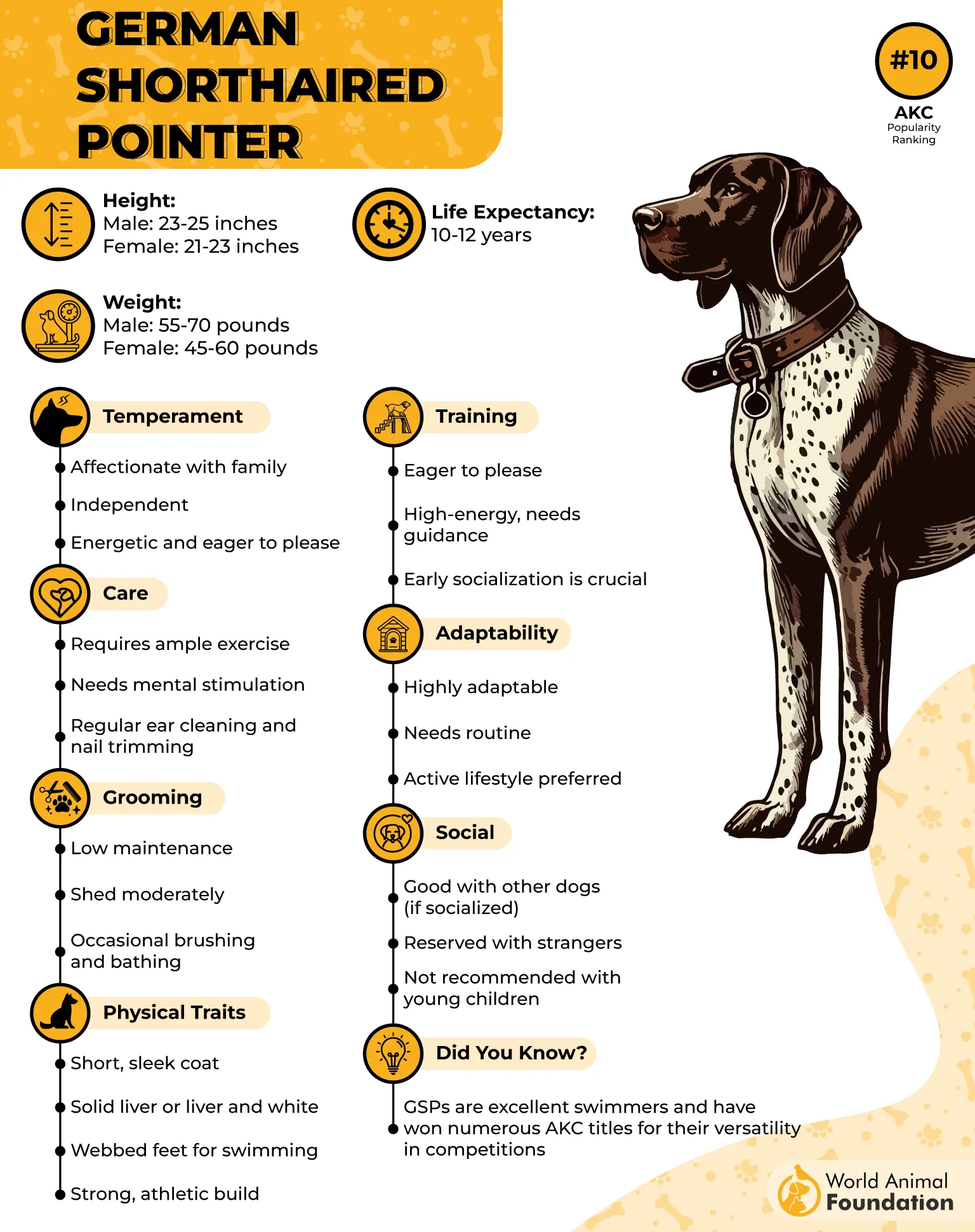
Exercise
German Shorthaired Pointers are high-energy dogs that thrive on intense physical activity. To remain balanced and happy, they require one to two hours of vigorous exercise daily, including activities like swimming, running, fetch, or agility games.
Without sufficient activity, they may resort to destructive behaviors. Their need for movement makes them ideal for families with active lifestyles and outdoor routines.
Fact: GSPs are often described by owners as the “perfect pointer” due to their versatility in the field and ability to quickly bond with their family.
2. Chesapeake Bay Retriever
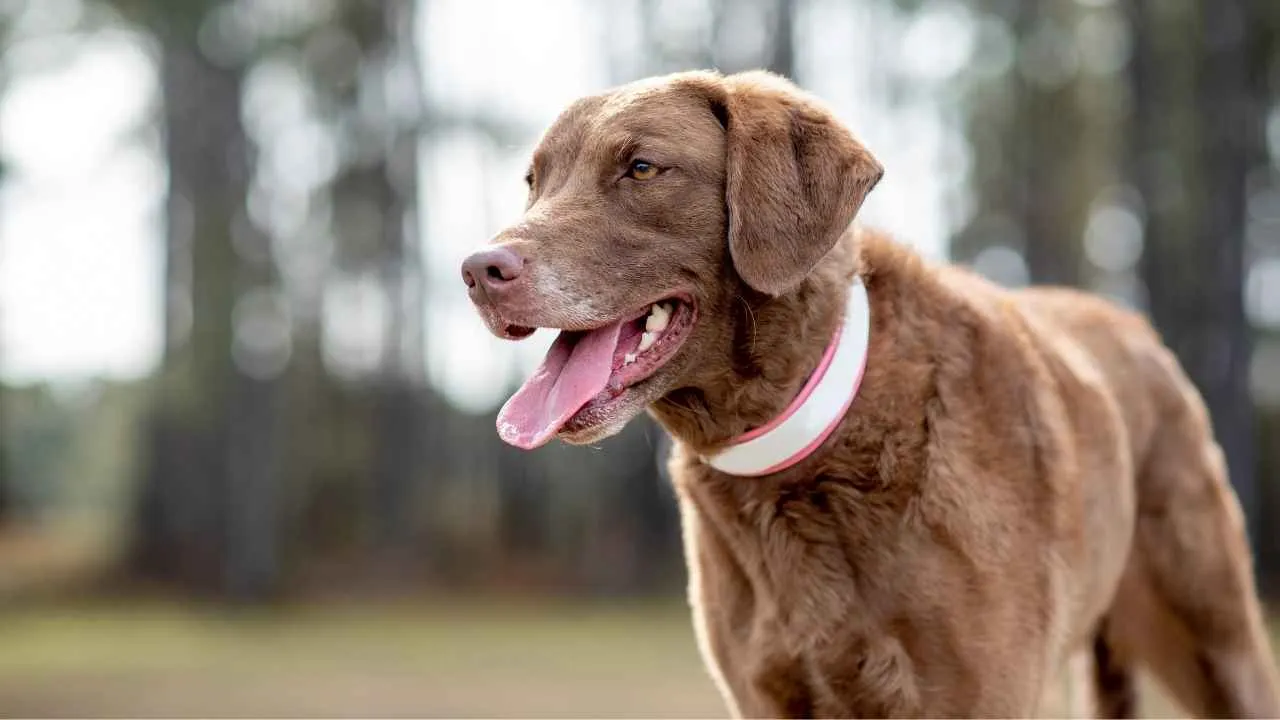
The Chesapeake Bay Retriever, often called the “Chessie,” hails from the United States and was originally developed along the Chesapeake Bay. PetMD says Chesapeake Bay Retrievers are energetic working dogs best suited for long days hunting waterfowl near icy waters.
This powerful sporting breed stands 21 to 26 inches tall and weighs up to 80 pounds. Its signature features include a dense, oily, water-resistant double coat that ranges in shades like deadgrass, sedge, or chocolatey brown, and striking yellow-amber eyes.
Known for their muscular build and endurance, Chessies are highly intelligent and emotionally complex, making them exceptional but independent companions. They belong to the Sporting Group and typically live 10 to 13 years.
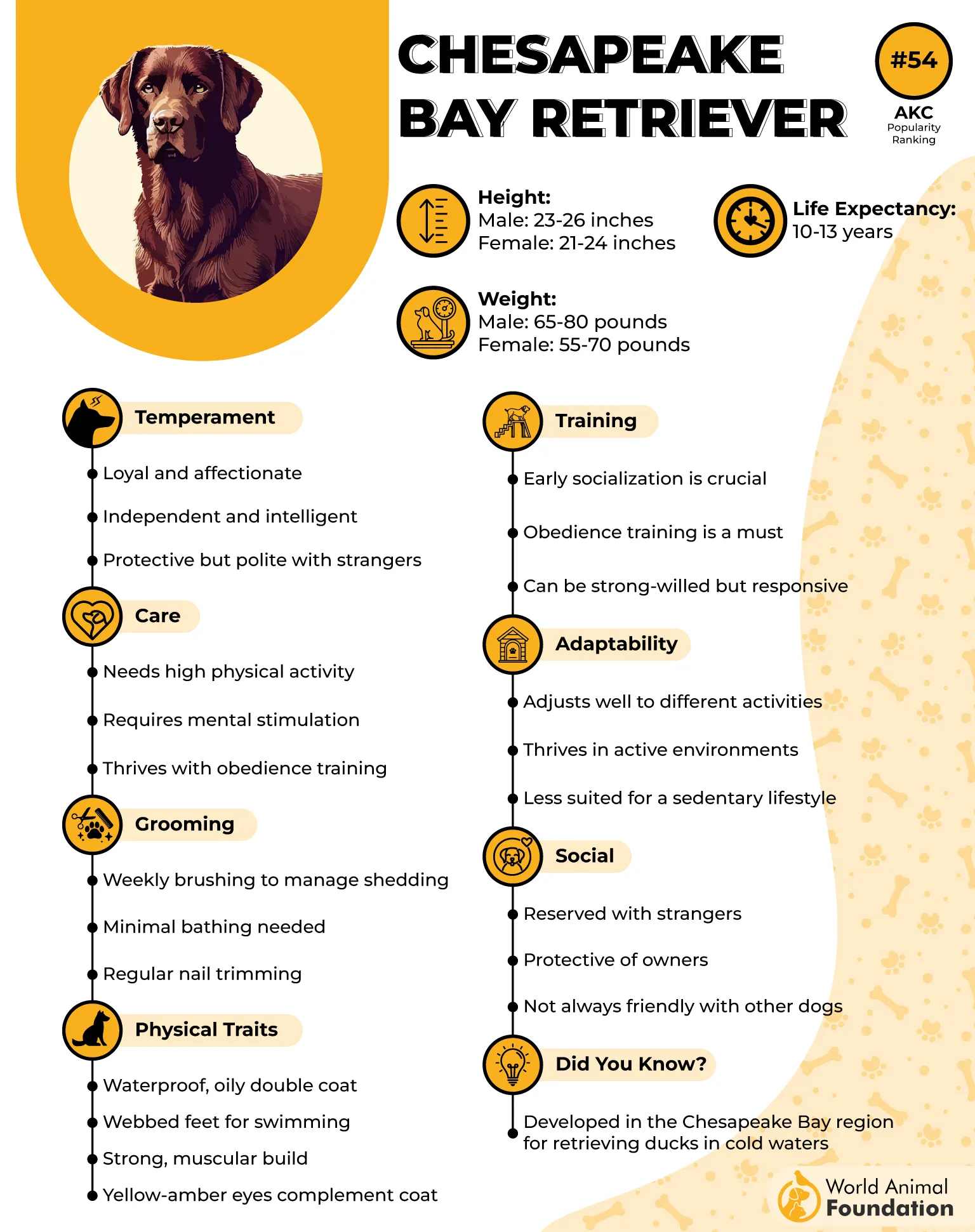
Exercise
Chesapeake Bay Retrievers are high-energy dogs that require vigorous daily activity. Alongside regular walks and training sessions, they thrive with 20 minutes of water play, which boosts both mental and physical health. Their background as tireless duck dogs makes them excellent candidates for dock diving and other aquatic sports.
Fun fact: The Chessie’s wavy, oily coat was specifically bred to keep them warm and buoyant while retrieving waterfowl in icy Chesapeake Bay waters.
3. Australian Shepherd
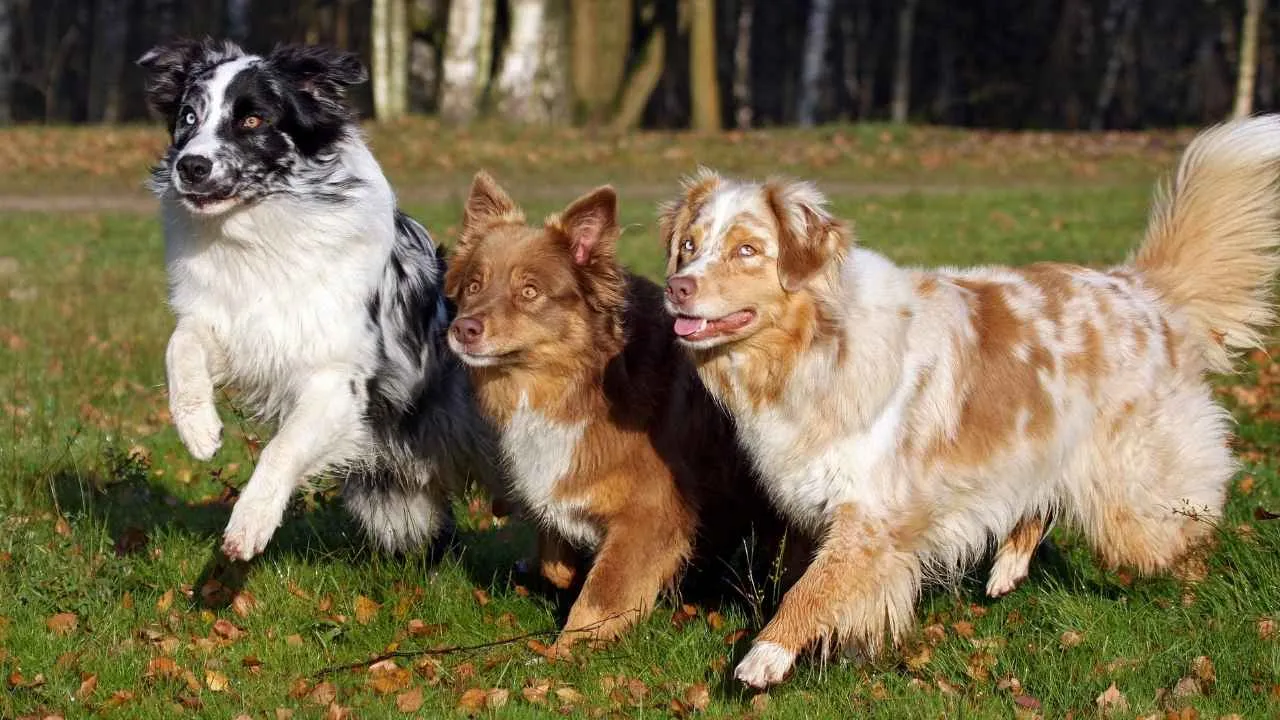
The Australian Shepherd, often referred to as the “Aussie,” is a dynamic and intelligent herding dog with deep American roots, despite its name. Developed in the United States to work on ranches and rodeos, this medium-sized breed is admired for its endurance, agility, and striking merle coat patterns.
Aussies typically stand between 18 to 23 inches tall and weigh anywhere from 40 to 65 pounds. With their piercing eyes and boundless enthusiasm, they are easily recognized by their keen expression and alert posture. Purina says Australian Shepherds are intelligent, energetic, and focused on their work.
Recognized by the American Kennel Club under the herding group, Australian Shepherds typically live between 12 to 15 years. Their eagerness to please and quick wit make them standout performers in high-energy sports like dock diving.

Exercise
Aussies thrive on physical activity and mental engagement. To stay balanced and happy, they require at least 1 to 2 hours of exercise daily—ideally in a fenced area.
Activities such as fetch, hiking, agility training, and swimming all provide ideal outlets. Their natural athleticism and drive to work make dock diving an exhilarating challenge they love to conquer.
Fun fact: Originally bred to herd livestock, Aussies will often try to herd children, other pets, or even fast-moving toys.
4. Nova Scotia Duck Tolling Retriever
Compact, energetic, and built for action, the Nova Scotia Duck Tolling Retriever—affectionately known as the Toller—is the smallest of the American Kennel Club’s retriever breeds. Originally bred in Nova Scotia, Canada, this dog was developed to mimic the playful behavior of foxes to lure and retrieve waterfowl, a skill known as “tolling.”
With a height ranging from 18 to 19 inches and a weight of 35 to 50 pounds, Tollers are muscular, agile, and ideal for activities that demand speed, precision, and a love for water, like dock diving.
Their striking red coat, accented by white markings and expressive almond-shaped eyes, is both eye-catching and functional, with a water-resistant texture that helps them glide through pools and lakes with ease.
Exercise
Tollers thrive on physical and mental engagement. A brisk 30-minute walk paired with interactive sessions—such as ball games or agility drills—is typically enough for most.
However, some individuals may need even more stimulation to remain happy and well-behaved. Their stamina and zest for action make them tireless dock diving companions.
Fun Fact: Tollers are nicknamed “red tornadoes” due to their boundless energy and fiery coat.
5. American Water Spaniel
The American Water Spaniel, also called AWS, is a versatile sporting breed developed in the Great Lakes region of the United States. Originally bred for retrieving from icy waters and navigating marshy banks, this medium-sized gundog stands 15 to 18 inches tall and weighs between 25 to 45 pounds.
It features a dense, waterproof coat that is either tightly curled or wavy—ideal for aquatic environments. With webbed feet, padded paws, and a compact, agile frame, the AWS is perfectly suited for dock diving, slipping in and out of skiffs with ease.
Its warm brown coat and charming demeanor give it a distinguished presence in any competition. This intelligent, adaptable breed belongs to the Sporting Group and has a lifespan of 10 to 14 years.
Exercise
The American Water Spaniel thrives on activity, requiring ample daily exercise to prevent restlessness and undesirable behaviors.
Vigorous games of fetch, swimming, and outdoor play sessions in spacious yards or parks are ideal. Without regular stimulation, this eager-to-please breed can become noisy or destructive.
Fun Fact: Despite their modest size, American Water Spaniels were bred to retrieve game from boats without rocking them—an ideal trait for agility-based sports like dock diving.
6. Labrador Retriever
The Labrador Retriever, often just called “Lab,” is a dock diving icon with a reputation built on athleticism, intelligence, and an infectious zest for water. Originating in Newfoundland and perfected in the United Kingdom, Labs were initially bred to retrieve waterfowl—a trait that directly contributes to their success in water sports.
These medium-to-large dogs typically stand between 21.5 to 24.5 inches tall and weigh 55 to 80 pounds.
Their dense, water-resistant double coat and powerful build help them launch impressively from docks, while their otter-like tail aids in balance and direction mid-air. Webbed feet further boost their swimming efficiency, making them strong contenders in dock diving.
Exercise
Labradors thrive on activity and require around 2 hours of physical exercise daily. This should include both aerobic activities and mental challenges.
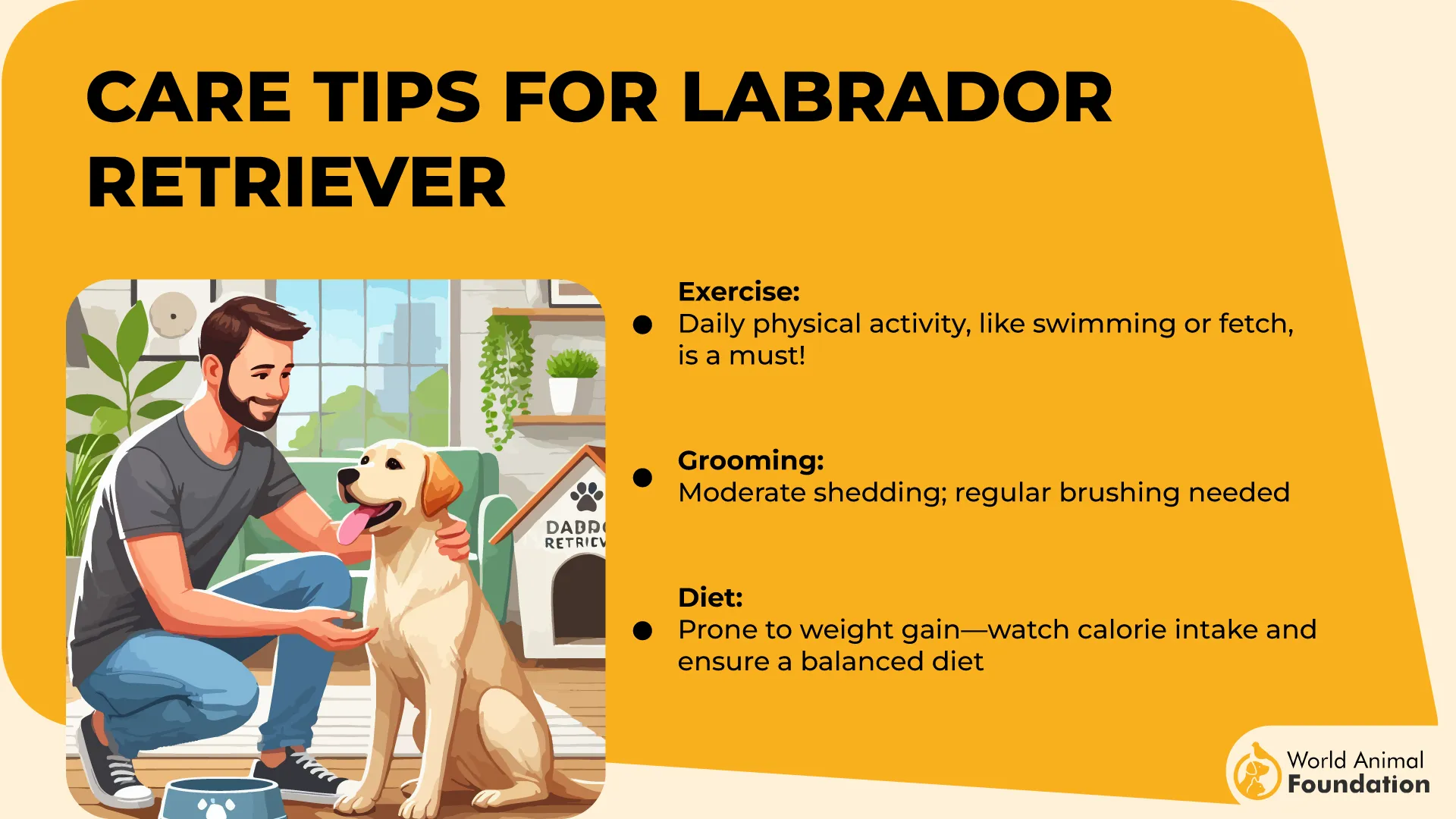
Games of fetch, swimming, and agility drills are ideal. Keeping them active not only enhances their dock diving performance but also prevents boredom-related behavior. Their love for pleasing their human companions makes training both rewarding and fun.
Fun Fact: Labs are so adept at scent and retrieval work that they are also among the top choices for service and search-and-rescue roles across the world.
7. Golden Retriever
Golden Retrievers, often referred to as “Goldens,” are celebrated not only for their affectionate temperament but also for their athleticism, making them stars in dock diving competitions. Originating in 19th-century Scotland, this breed was developed for retrieving waterfowl, a legacy reflected in their powerful build and innate love of water.
Goldens typically stand 21.5 to 24 inches tall and weigh between 55 to 75 pounds. With their dense golden coats, feathered tails, and expressive eyes, they radiate both charm and energy.
They belong to the Sporting Group and enjoy a lifespan of 10 to 12 years. Their playful yet focused demeanor, combined with a love of fetching and swimming, makes them naturals at soaring through the air into the water with grace and determination.
Exercise
Golden Retrievers require a minimum of two hours of vigorous daily activity. Their ideal routine includes long walks, sprint sessions, interactive play, and, of course, swimming. Regular exercise helps keep their minds sharp and their muscles primed for competition.
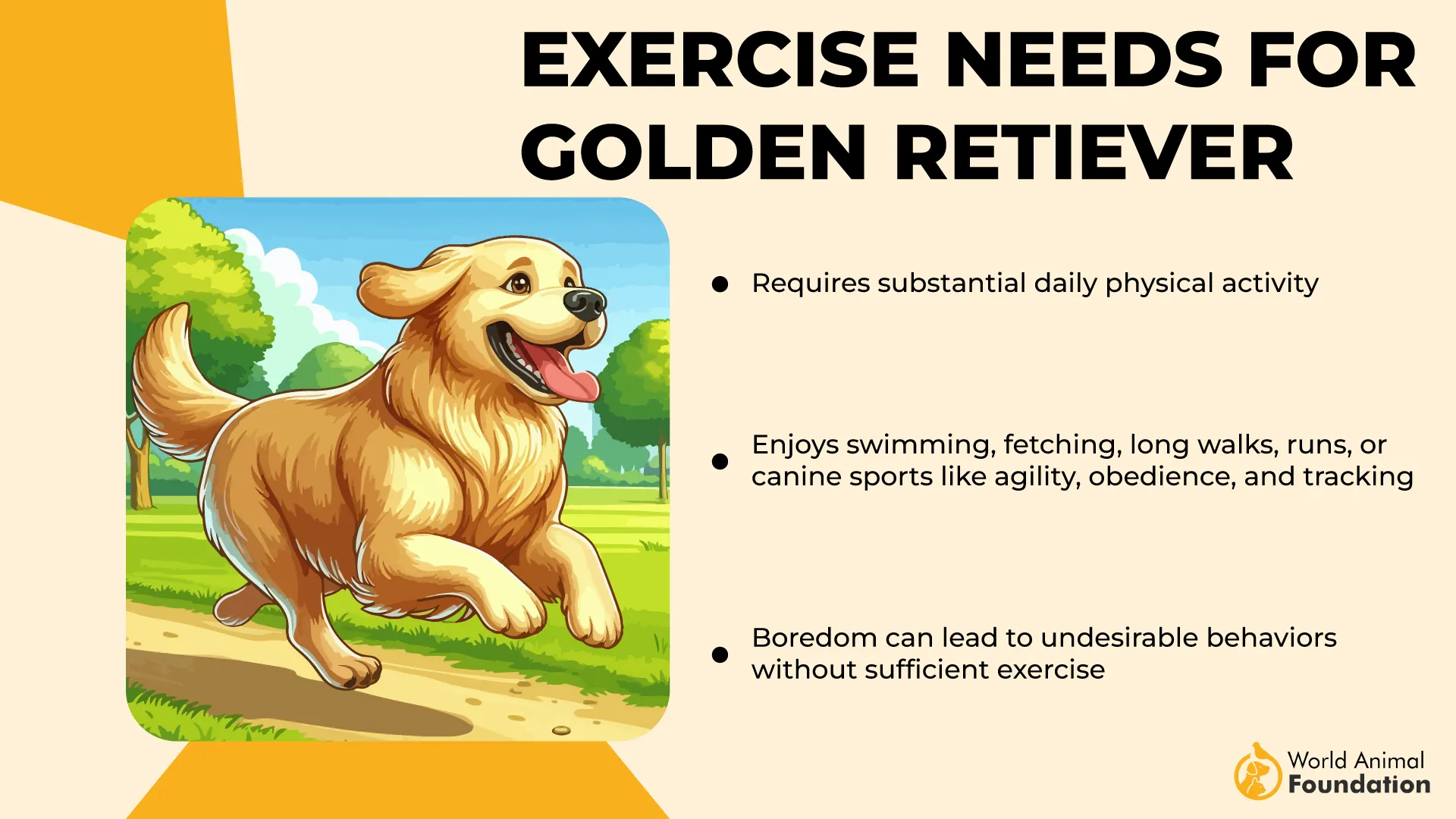
Fun Fact: Their ancestry can be traced to detailed gamekeeper records from Lord Tweedmouth’s estate, dating back to the 1830s.
8. Belgian Malinois
The Belgian Malinois, also known as the “Mal,” is a powerful, agile, and intelligent breed originally developed in Belgium as a herding and working dog.
Standing between 22 to 26 inches and weighing up to 80 pounds, this breed is part of the Herding Group and boasts a short, straight coat ranging from rich fawn to deep mahogany, with a distinctive black mask and alert, upright ears.
Their squarely built and athletic physique gives them a sleek, no-nonsense appearance well-suited for active, outdoor work, including dock diving.
Exercise
Belgian Malinois thrive on physical and mental challenges. They require more than 40 minutes of vigorous activity daily. Ideal exercises include herding drills and, of course, dock diving.
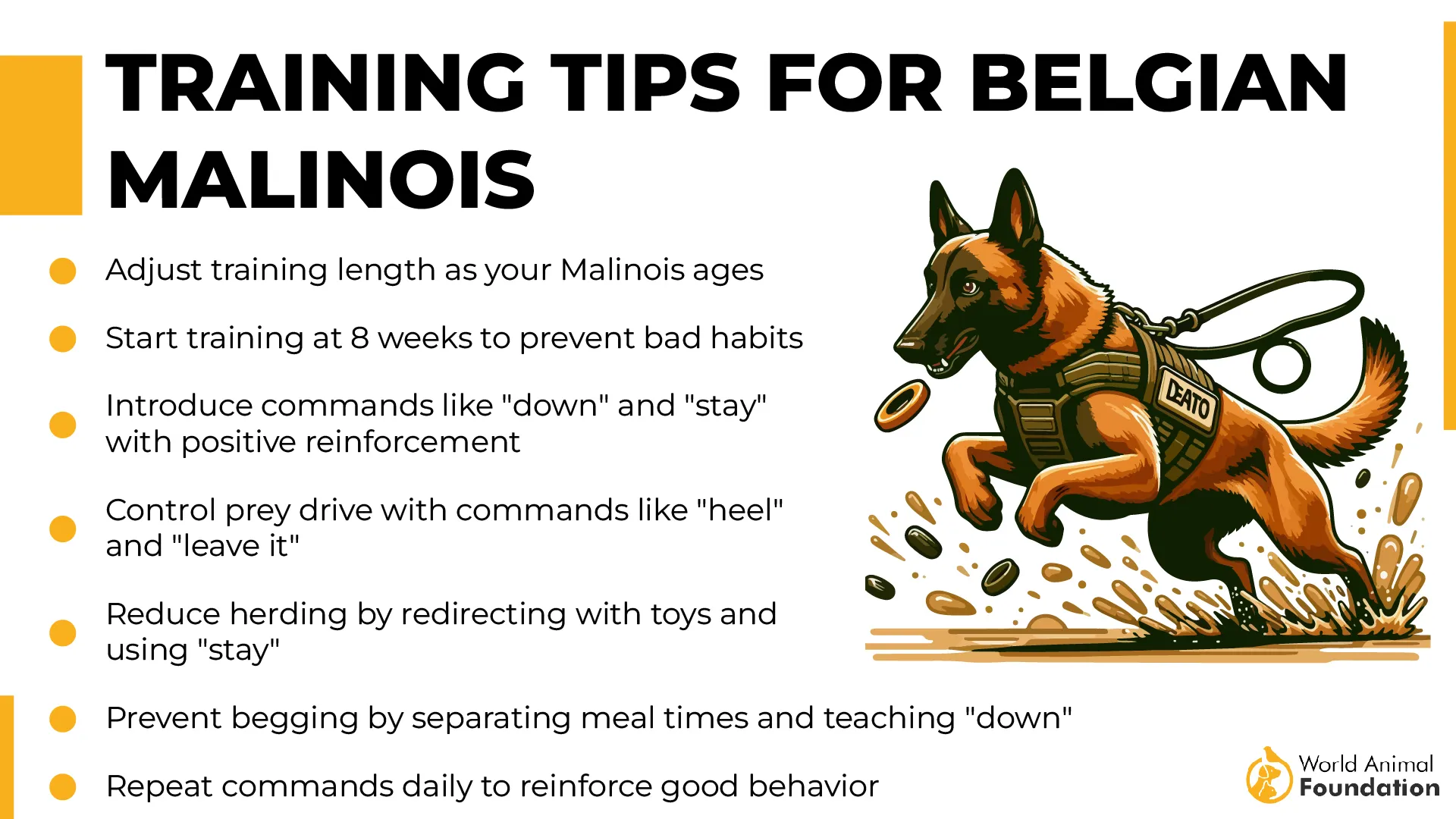
These dogs don’t just enjoy exercise—they need it. Without sufficient activity and companionship, they can grow restless or anxious. Mals are best paired with committed owners who can match their boundless energy.
Fact: Despite not being water dogs by tradition, Belgian Malinois dominate in dock diving thanks to their strength, focus, and incredible drive.
9. Whippet
The Whippet, affectionately dubbed the “Poor Man’s Racehorse,” is a sighthound known for its sleek physique and exceptional speed. Originating in England as a smaller cousin to the Greyhound, the Whippet stands around 18 to 22 inches tall and weighs between 25 to 40 pounds.
These elegant dogs exhibit a lean, muscular build with a deep chest and a trim waist—an ideal structure for both sprinting and launching off docks. With a smooth, short coat and a calm, affectionate nature, Whippets make excellent companions for both active and laid-back households.
Though they aren’t traditionally water dogs, their raw power, precision, and agility make them surprisingly capable in dock diving. Their quiet disposition also makes them well-suited for apartment living, provided they receive ample exercise.
Exercise
Whippets thrive on daily physical activity. At least 1–2 hours of exercise, including free running, agility games, and mental challenges, is essential. Their bursts of energy are balanced by long, relaxed lounging sessions.
Fact: Whippets can rival traditional water breeds in dock diving thanks to their explosive speed and aerodynamic form.
Conclusion
In the world of dog sports, dock diving is more than just a sport—it’s an exciting sport and an exhilarating sport that showcases the speed, agility, and water-loving nature of some of the best dog breeds.
From the explosive power of a dock diving competitor to the precision of their splashdown, these canines prove that determination and skill go paw-in-paw. Their adaptability and enthusiasm make them crowd favorites, whether they’re chasing distance records or simply enjoying the thrill of the leap.
Among these excellent dock diving dogs, certain breeds stand out for unique traits like a water-resistant coat or remarkable focus, such as the athletic border collie. These champions remind us that success in the sport comes from passion, training, and the perfect blend of natural ability.
Dock diving celebrates not only performance but also the deep bond between dog and handler—a connection that makes every jump worth watching.


